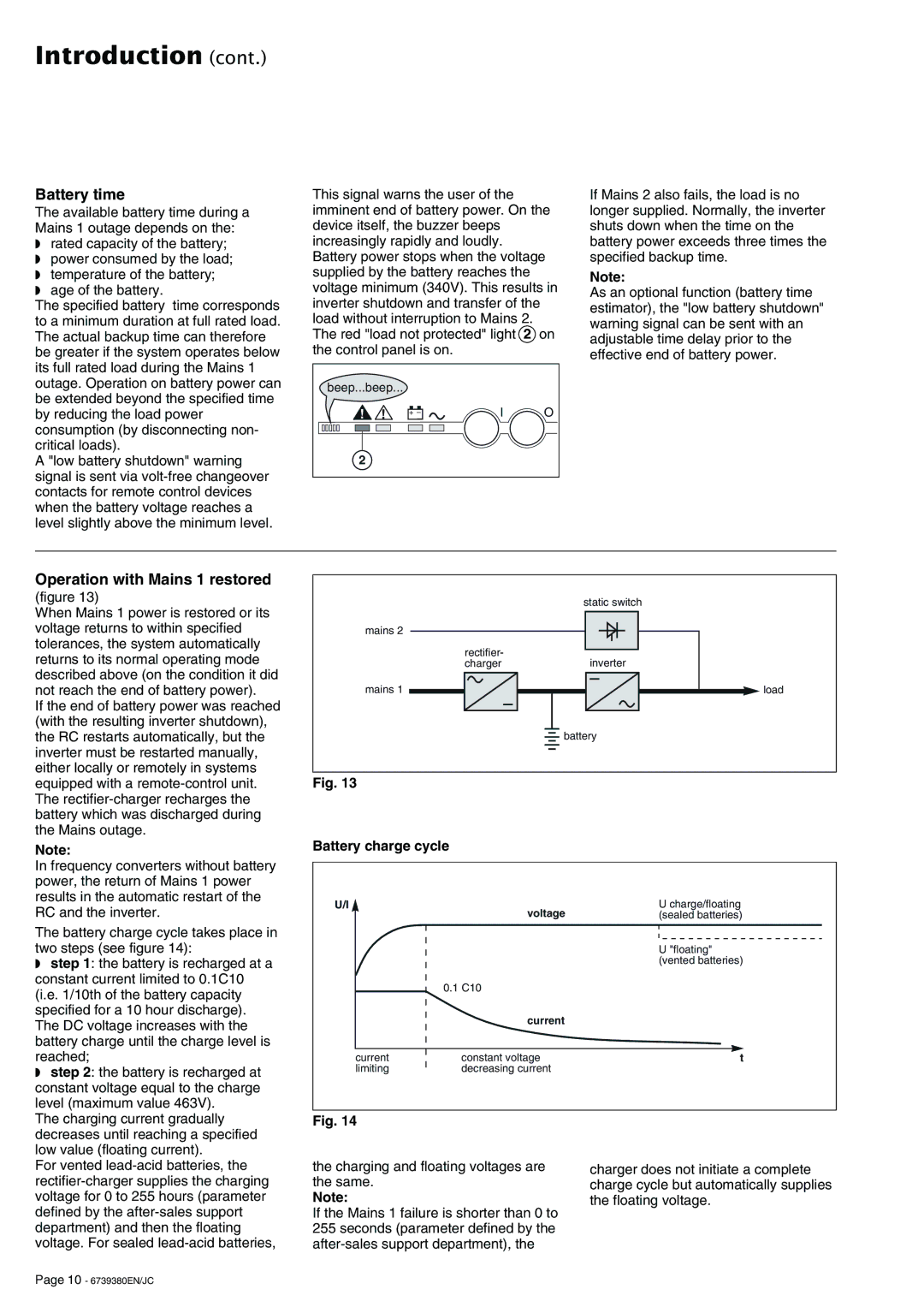
Introduction (cont.)
Battery time
The available battery time during a Mains 1 outage depends on the:
◗rated capacity of the battery;
◗power consumed by the load;
◗temperature of the battery;
◗age of the battery.
The specified battery time corresponds to a minimum duration at full rated load. The actual backup time can therefore be greater if the system operates below its full rated load during the Mains 1 outage. Operation on battery power can be extended beyond the specified time by reducing the load power consumption (by disconnecting non- critical loads).
A "low battery shutdown" warning signal is sent via
This signal warns the user of the imminent end of battery power. On the device itself, the buzzer beeps increasingly rapidly and loudly. Battery power stops when the voltage supplied by the battery reaches the voltage minimum (340V). This results in inverter shutdown and transfer of the load without interruption to Mains 2. The red "load not protected" light 2 on the control panel is on.
beep...beep...
! | ! | + – | I | O |
2
If Mains 2 also fails, the load is no longer supplied. Normally, the inverter shuts down when the time on the battery power exceeds three times the specified backup time.
Note:
As an optional function (battery time estimator), the "low battery shutdown" warning signal can be sent with an adjustable time delay prior to the effective end of battery power.
Operation with Mains 1 restored
(figure 13)
When Mains 1 power is restored or its voltage returns to within specified tolerances, the system automatically returns to its normal operating mode described above (on the condition it did not reach the end of battery power).
If the end of battery power was reached (with the resulting inverter shutdown), the RC restarts automatically, but the inverter must be restarted manually, either locally or remotely in systems equipped with a
Note:
In frequency converters without battery power, the return of Mains 1 power results in the automatic restart of the RC and the inverter.
The battery charge cycle takes place in two steps (see figure 14):
◗step 1: the battery is recharged at a constant current limited to 0.1C10 (i.e. 1/10th of the battery capacity specified for a 10 hour discharge). The DC voltage increases with the battery charge until the charge level is reached;
◗step 2: the battery is recharged at constant voltage equal to the charge level (maximum value 463V).
The charging current gradually decreases until reaching a specified low value (floating current).
For vented
static switch
mains 2
rectifier-
chargerinverter
mains 1 | load |
![]() battery
battery
Fig. 13
Battery charge cycle
U/I | voltage | U charge/floating |
| (sealed batteries) | |
|
| U "floating" |
|
| (vented batteries) |
| 0.1 C10 |
|
| current |
|
current | constant voltage | t |
limiting | decreasing current |
|
Fig. 14
the charging and floating voltages are | charger does not initiate a complete |
the same. | charge cycle but automatically supplies |
Note: | the floating voltage. |
If the Mains 1 failure is shorter than 0 to |
|
255 seconds (parameter defined by the |
|
|
Page 10 - 6739380EN/JC
